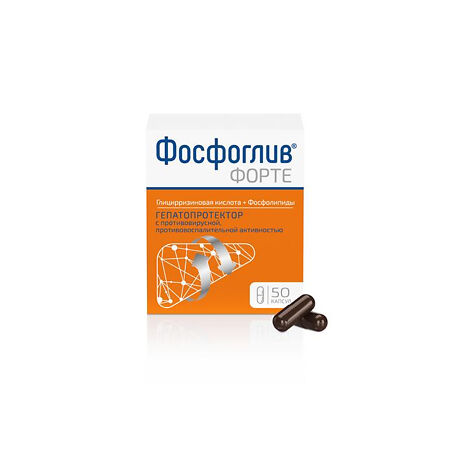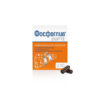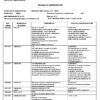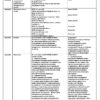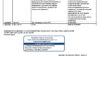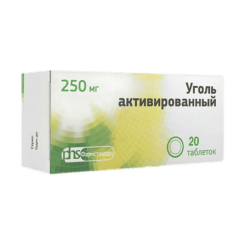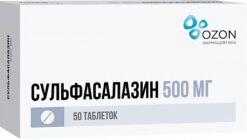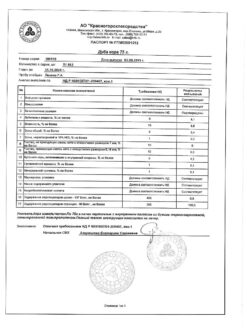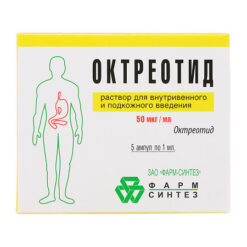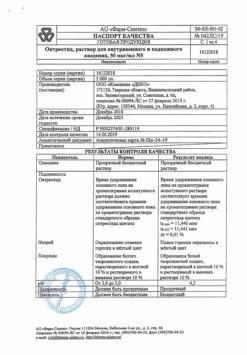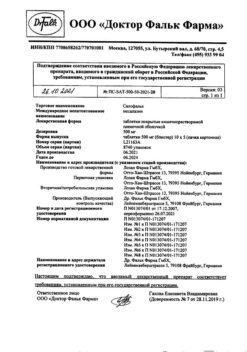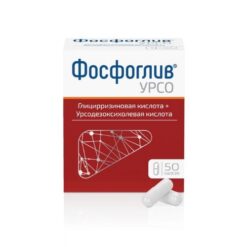No products in the cart.
Phosphogliv forte, capsules 50 pcs
€30.08 €26.07
Out of stock
(E-mail when Stock is available)
Description
Pharmacotherapeutic group: hepatoprotective agent
ATX code: [A05VA]
Pharmacological properties.
Combined remedy. It has membrane stabilizing, hepatoprotective and antiviral effects.
Phosphatidylcholine (the main component of phospholipids) is the main structural element of cell and intracellular membranes and can restore their structure and functions in case of damage, having cytoprotective effect.
Normalizes protein and lipid metabolism, prevents loss of enzymes and other active substances by hepatocytes, restores detoxication function of the liver and inhibits formation of connective tissue, reducing the risk of liver fibrosis and cirrhosis.
Glycyrate (glycyrrhizic acid and salts) has anti-inflammatory effects, inhibits the reproduction of viruses in the liver and other organs by stimulating the production of interferons, increasing phagocytosis, increasing the activity of natural killer cells. It has hepatoprotective effect due to antioxidant and membrane stabilizing activity. Potentiates the effect of endogenous glucocorticosteroids, providing anti-inflammatory and anti-allergic effect in non-infectious liver lesions.
In skin lesions due to the membrane stabilizing and anti-inflammatory action of the components limits the spread of the process and promotes the regression of the disease.
Pharmacokinetics.
Phosphatidylcholine
Over 90% of phospholipids ingested are absorbed in the small intestine. Most of them are broken down by phospholipase A to 1-acetyl-lysophosphatidylcholine, 50% of which undergoes reverse acetylation to polyunsaturated phosphatidylcholine during absorption in the intestinal mucosa. Polyunsaturated phosphatidylcholine with lymph stream enters blood, from where it is mainly bound with high density lipoproteins to liver. Pharmacokinetics in humans have been studied with the radioactively labeled 3H (choline portion) and 14C (linoleic acid residue) dilenoleoylphosphatidylcholine. Maximum concentration of 3H is reached after 6-24 hours, constituting 19.9% of the prescribed dose; 14C is reached after 4-12 hours, constituting 27.9%. The elimination half-life of the choline component is 66 hours and that of the linoleic acid residue 32 hours. In the feces, 2% 3H and 4.5% 14C are detected; in the urine, 6% 3H and a minimal amount 14C. Both isotopes are more than 90% absorbed in the gut.
Glycyrrhizic acid
. After oral administration in the intestine under the influence of the enzyme β-glucuronidase produced by bacteria of normal microflora, from glycyrrhizic acid is formed the active metabolite – β-glycyrrhetic acid, which is absorbed into the systemic bloodstream. In the blood β-glycyrrhetic acid binds with albumin and is almost completely transported to the liver. Excretion of β-glycyrrhetic acid occurs mainly in bile, with residual amount in urine.
According to experimental data, phospholipids improve the lipophilic properties of glycyrrhizic acid, increasing the intensity and rate of its absorption by more than 2-fold.
Indications
Indications
Fatty liver (fatty hepatosis), alcohol, toxic, including medicinal, liver damage;
As part of complex therapy for viral hepatitis, liver cirrhosis, psoriasis.
Pharmacological effect
Pharmacological effect
Pharmacotherapeutic group: hepatoprotective agent
ATX code: [A05BA]
Pharmacological properties.
Combined remedy. It has membrane-stabilizing, hepatoprotective and antiviral effects.
Phosphatidylcholine (the main component of phospholipids) is the main structural element of cellular and intracellular membranes, capable of restoring their structure and function when damaged, providing a cytoprotective effect.
Normalizes protein and lipid metabolism, prevents the loss of enzymes and other active substances by hepatocytes, restores the detoxification function of the liver, inhibits the formation of connective tissue, reducing the risk of fibrosis and cirrhosis of the liver.
Glycyrate (glycyrrhizic acid and salts) has an anti-inflammatory effect, suppresses the reproduction of viruses in the liver and other organs by stimulating the production of interferons, increasing phagocytosis, and increasing the activity of natural killer cells. It has a hepatoprotective effect due to its antioxidant and membrane-stabilizing activity. Potentiates the effect of endogenous glucocorticosteroids, providing anti-inflammatory and antiallergic effects in non-infectious liver lesions.
In case of skin lesions, due to the membrane-stabilizing and anti-inflammatory effects of the components, it limits the spread of the process and promotes regression of the disease.
Pharmacokinetics.
Phosphatidylcholine
More than 90% of phospholipids taken orally are absorbed in the small intestine. Most of them are cleaved by phospholipase A to 1-acetyl-lysophosphatidylcholine, 50% of which is reverse acetylated into polyunsaturated phosphatidylcholine during absorption in the intestinal mucosa. Polyunsaturated phosphatidylcholine enters the bloodstream through the lymph, from where it mainly enters the liver in the form of high-density lipoproteins. Pharmacokinetics in humans was studied using radiolabeled dilenoleylphosphatidylcholine – 3H (choline moiety) and 14C (linoleic acid moiety). The maximum concentration of 3H is achieved after 6-24 hours, accounting for 19.9% of the prescribed dose; 14C – after 4-12 hours, amounting to 27.9%. The half-life of the choline component is 66 hours, the linoleic acid residue is 32 hours. In feces, 2% 3H and 4.5% – 14C are detected; in urine – 6% 3H and a minimal amount of 14C. Both isotopes are absorbed in the intestine by more than 90%.
Glycyrrhizic acid
After oral administration in the intestine, under the influence of the enzyme β-glucuronidase, produced by bacteria of normal microflora, an active metabolite is formed from glycyrrhizic acid – β-glycyrrhetic acid, which is absorbed into the systemic circulation. In the blood, β-glycyrrhetic acid binds to albumin and is almost completely transported to the liver. The excretion of β-glycyrrhetic acid occurs predominantly in bile, with residual amounts in urine.
According to experimental data, phospholipids improve the lipophilic properties of glycyrrhizic acid, increasing the intensity and rate of its absorption by more than 2 times.
Special instructions
Special instructions
Impact on the ability to drive vehicles and machinery.
The use of the drug does not affect the ability to drive vehicles or engage in other potentially hazardous activities that require increased concentration and speed of psychomotor reactions.
Active ingredient
Active ingredient
Glycyrrhizic acid, Phospholipids
Composition
Composition
Active ingredients: Phospholipids (Lipoid PPL-400) – 400.0 mg [in terms of 100% substance (the main component is phosphatidylcholine from 73 to 79%)] – 300.0 mg;
Sodium glycyrrhizinate (trisodium salt of glycyrrhizic acid) – 65.0 mg.
Excipients: butylated hydroxytoluene – 0.1 mg, ethanol (ethyl alcohol) 95% – 12.0 mg, sunflower oil – 22.9 mg;
Hard gelatin capsules No. 0 –96.0 mg.
[Capsule composition:
body and cap: titanium dioxide (E 171) – 0.3333%, red iron oxide dye (E 172) – 0.9300%, yellow iron oxide dye (E 172) – 0.2000%, black iron oxide dye (E 172) – 0.5300%, gelatin – up to 100.0%].
Pregnancy
Pregnancy
The drug is contraindicated during pregnancy and breastfeeding (there is insufficient data on effectiveness and safety).
Contraindications
Contraindications
Antiphospholipid syndrome; hypersensitivity to the components of the drug; pregnancy, breastfeeding period; children’s age up to 12 years.
Side Effects
Side Effects
Allergic reactions: skin rash, difficulty in nasal breathing, conjunctivitis, cough.
From the cardiovascular system: transient (transient) increase in blood pressure, peripheral edema.
From the digestive system: dyspepsia (belching, nausea, bloating), discomfort in the abdomen.
If these symptoms occur, you should stop taking the drug and consult your doctor.
Interaction
Interaction
Glycyrrhizic acid is a synergist of corticosteroid hormones, enhances and prolongs their action.
Overdose
Overdose
Symptoms of overdose: sodium and fluid retention in the body, manifested by peripheral edema and increased blood pressure; hyponatremia.
Treatment: depending on the severity of overdose symptoms, it is necessary to reduce the dose of the drug and/or prescribe spironolactone 50-100 mg per day.
Storage conditions
Storage conditions
Store at a temperature not exceeding 25 °C.
Keep out of the reach of children.
Shelf life
Shelf life
3 years. After the expiration date, do not use the drug.
Manufacturer
Manufacturer
Pharmstandard-Leksredstva, Russia
Additional information
| Shelf life | 3 years. Do not use the drug after the expiration date. |
|---|---|
| Conditions of storage | Store at the temperature not more than 25 °С. Keep out of reach of children. |
| Manufacturer | Pharmstandard-Leksredstva, Russia |
| Medication form | capsules |
| Brand | Pharmstandard-Leksredstva |
Related products
Buy Phosphogliv forte, capsules 50 pcs with delivery to USA, UK, Europe and over 120 other countries.

